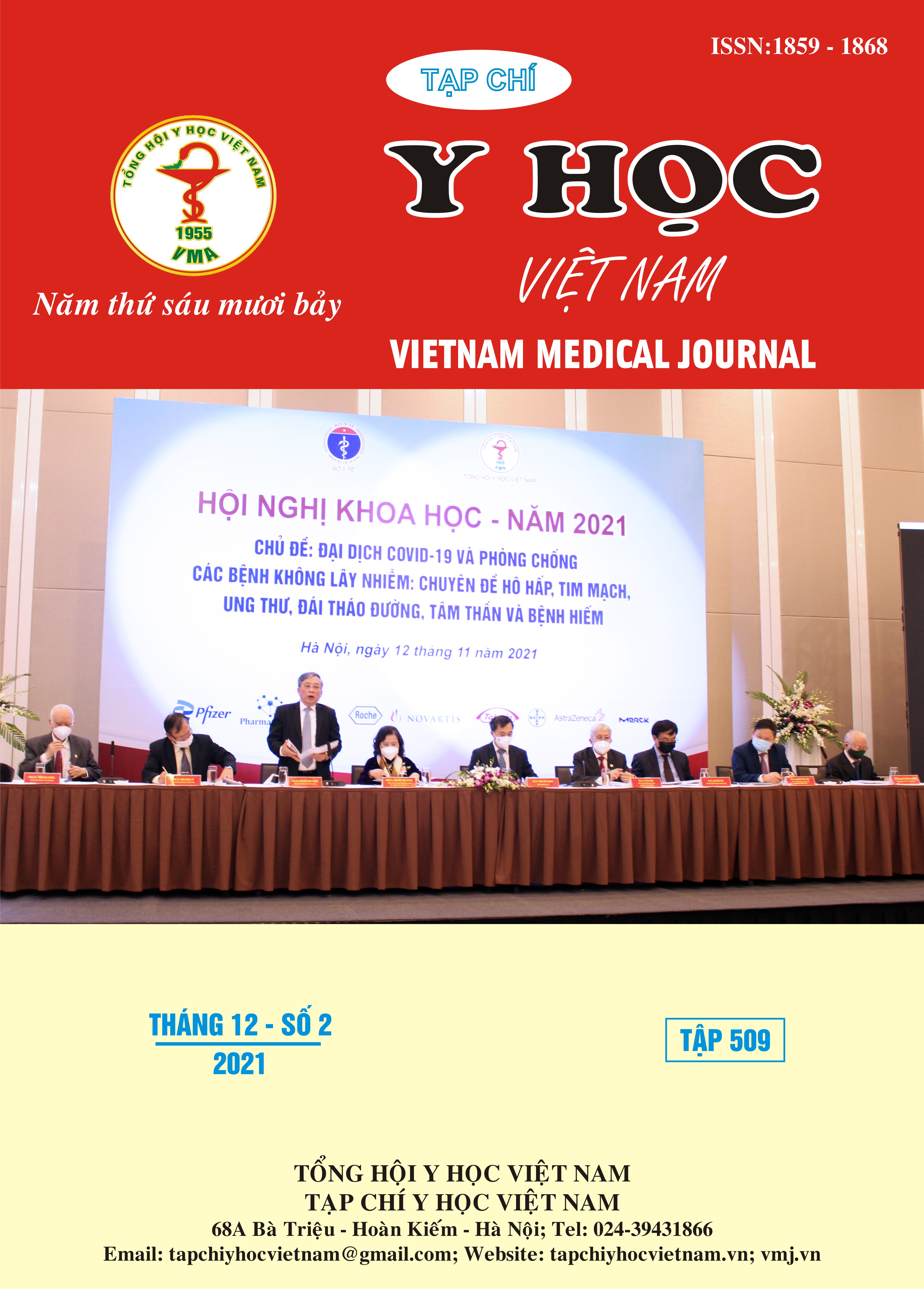EVALUTERESULTS AFTER SURGERY OF STAGE II, III CUTANEOUS MELANOMA AT K HOSPITAL
Main Article Content
Abstract
Objective: Study on clinical features andresults after adical surgery alone of stage II, IIIcutaneous melanoma. Subjects and methods: A retrospective and prospective study on 130 cutaneous melanoma patients in stage II, III were treated with surgery at K hospital from 2013 to 2019. Results: The average age is 56,0 ± 1,8, which is common from 40 to 79 years old, youngest patient 18 year-old and the oldest one 85 year-old, male/female 1,03. Tumors are often located in the lower limbs 46,9%, black tumor 69.9%, change in size, shape100%, tumors grow on thick skin 42,3%, satellite 23,8%, ulcer 31,6%. Regional lymph node positive 48,5%, stage 2, 3 are 43,1%, 56,9%. Wide excision, lymphadenectomy 83,8%; amputation, disassembling, lymphadenectomy16,2%. Reconstruction after tumor resection by skin flap with vascular 13,8%, permuted skin flap 7,7% and skin patch 7%. Lymphedema after lymphadenectomy 11,5%, recurrenced tumor and regional lympho node 9,2%. Distant metastasis after treatment 51,5%, lung metastasis 50,7%, liver metastasis 10,5%, brain metastasis 13,4%, subcutaneous metastasis 6% and multi-organ metastasis 15.9%. The 1, 3, 5 years disease-free survival is 93,8%, 65,9% and 40,7%, respectively. The 1, 3, 5 years overall survivalis 100%, 73,1% and 47,1%, respectively.The 5-yearsoverall survival in stages 2, 3 is 75,3%,28%. Conclusion: Cutaneous melanoma is common: > 40 years old, lower limbs, black tumor, change in size, shape, grow on thick skin. Male/female 1,03, satellite 23,8%, ulcer 31,6%. Regional lymph node positive 48,5%, stage 2, 3 are 43,1%, 56,9%. Results after surgery: wide excision, lymphadenectomy 83,8%; amputation, disassembling, lymphadenectomy16,2%. Reconstruction after tumor resection by skin flap with vascular 13,8%, permuted skin flap 7,7% and skin patch 7%. Lymphedema after lymphadenectomy 11,5%, recurrenced tumor and regional lympho node 9,2%. Distant metastasis after treatment 51,5%.The 1, 3, 5 years disease-free survival is 93,8%, 65,9% and 40,7%, respectively. The 1, 3, 5 years overall survival is 100%, 73,1% and 47,1%, respectively. The 5-years overall survival in stages 2, 3 is 75,3%,28%.
Article Details
Keywords
Cutaneous melanoma, results after surgery
References
2. Cutaneous melanoma: Etiology and therapy (2017). Chapter 1: Epidemiology of melanoma. Brisbane (AU): Codon Publications.
3. Marc Hurlbert (2020). 2020 Melanoma mortality rates decreasing despite ongoing increase in incidence. Melanoma research Alliance.
4. Phạm Hoàng Anh và cộng sự (1993), Ung thư Hà Nội 1991- 1992, y học Việt Nam; chuyên đề ung thư, tập 173, số 7, 14-21.
5. Đào Tiến Lục (2001), Nghiên cứu đặc điểm lâm sàng, mô bệnh học và một số yếu tố tiên lượng của ung thư hắc tố. Luận văn bác sỹ nội trú, trường đại học Y Hà Nội.
6. Masback A, Westerdahl J, Ingvar et al. (1997). Cutaneous malignant melanoma in southern Sweden 1965, 1975 and 1985 – prognostic factors and histologic correlations.Cancer, 83, 275-83.
7. Barnhill RL, Fine JA, Roush GC, Berwick M. (1996). Predicting five-year outcome for patients with cutaneous melanoma in a population-based study. Cancer, 78, 427-432.


